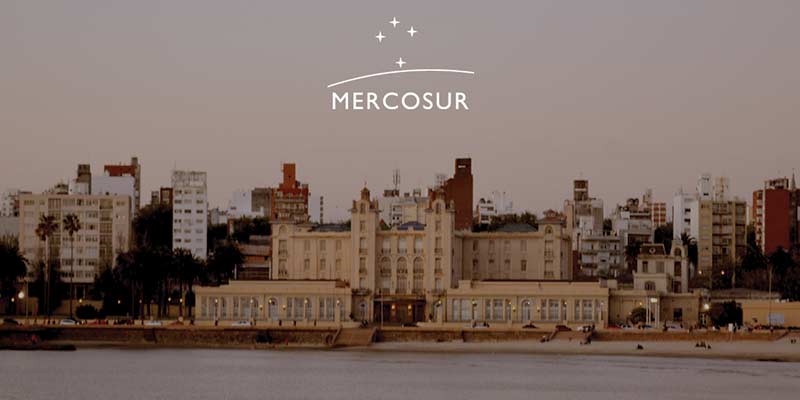- World
- Jul 29
Explainer - What is MERCOSUR (Southern Common Market)?
• Bolivia has officially joined the South American trade bloc MERCOSUR (Southern Common Market).
• The country will have up to four years to incorporate the MERCOSUR regulatory framework.
• Bolivia’s full membership has been in the making for years. Concerns over the solidity of the country’s democratic institutions had long delayed its admission.
What is MERCOSUR?
• The Southern Common Market or MERCOSUR (Spanish initials of Mercado Común del Sur) is a regional integration process, initially established by Argentina, Brazil, Paraguay and Uruguay, and subsequently joined by Venezuela and Bolivia.
• Venezuela, which officially joined in July 2012, was suspended from membership in 2017.
• It was established in 1991 by the Treaty of Asuncion, which was later updated in 1994 by the Treaty of Ouro Preto.
It aims to achieve:
i) Free movement of Goods and Services.
ii) Common External Tariff (CET)
iii) Common External Trade Policy
iv) Legislation Harmonisation
v) Macroeconomic Coordination of Policies.
• All South American countries are linked to MERCOSUR, either as Member State or Associate member.
• Its main objective has been to promote a common space that generates business and investment opportunities through the competitive integration of national economies into the international market.
• It has established multiple agreements with countries or groups of countries, granting them, in some cases, the status of Associated States.
• Associated States of MERCOSUR are: Chile, Colombia, Ecuador, Guyana, Peru and Suriname.
• The Secretariat of MERCOSUR is located at Montevideo in Uruguay.
• The bloc can be characterised as a customs union in the process of consolidation, with common market features, with the elimination of obstacles to the circulation of factors of production, as well as the adoption of a common tariff policy regarding third countries.
• MERCOSUR has a combined GDP of approximately $1.92 trillion.
• MERCOSUR Summit is held once every six months, during which the handover of presidency takes place.
• Decision is made by consensus, in the presence of all member states, and is binding on the members.
MERCOSUR makes its decisions through three bodies:
i) The Council of the Common Market (CMC), the main body of MERCOSUR which conducts the integration process politically.
ii) The Common Market Group (GMC), which oversees the daily functioning of the Bloc.
iii) The Mercosur Trade Commission (CCM), responsible for the administration of common commercial policy instruments.
• More than 300 negotiation forums assist these bodies in the most diverse areas, integrated by representatives of each States Parties in order to promote initiatives to be considered by decision-making bodies.
• For the purpose of the implementation of its regional policies, MERCOSUR has created several permanent agencies in different cities.
Examples of these are:
• The Fund for the Structural Convergence of MERCOSUR (FOCEM)
• The Institute of Public Policies on Human Rights (IPPDH)
• MERCOSUR Social Institute (ISM)
• The Parliament of MERCOSUR (PARLASUR)
• The Secretariat of MERCOSUR (SM)
• The Permanent Review Tribunal (TPR).
India-MERCOSUR trade agreement
• A Framework Agreement was signed between India and MERCOSUR in June 2003 at Asuncion, Paraguay to create conditions and mechanisms for negotiations by granting reciprocal tariff preferences in the first stage and, in the second stage, to negotiate a free trade area between the two parties.
• As a follow up to the said Framework Agreement, a Preferential Trade Agreement (PTA) between India and MERCOSUR was signed in New Delhi on January 25, 2004 and five annexes to this Agreement were signed and incorporated on March 19, 2005.
• The first two Annexes of the PTA relate to the list of products on which the two sides have agreed to give fixed tariff preferences to each other. The remaining three Annexes relate to the Rules of Origin, Preferential Safeguard Measures and Dispute Settlement Procedures respectively.
• By this PTA, India and MERCOSUR have agreed to give tariff concessions, ranging from 10 per cent to 100 per cent to the other side on 450 and 452 tariff lines respectively.
• The India-MERCOSUR PTA became operational with effect from June 1, 2009.
Manorama Yearbook app is now available on Google Play Store and iOS App Store


